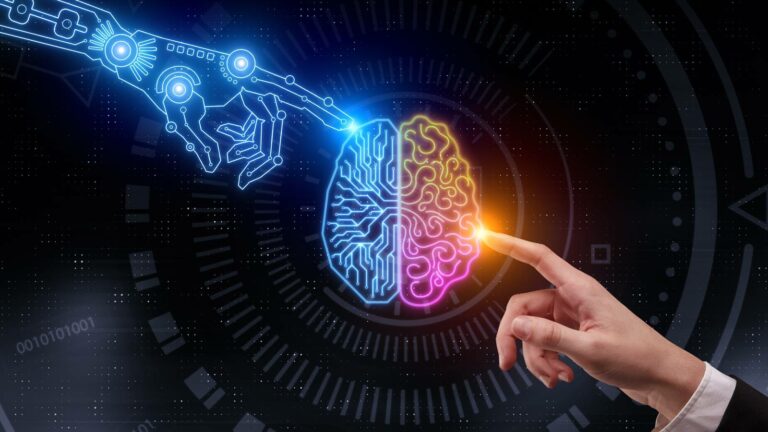Artificial Intelligence: The Good, The Bad And The Ugly

- Katsina City News
- 18 Jan, 2024
- 593
Culled from Daily Trust
Artificial Intelligence, commonly known as AI, has recently garnered significant attention in mainstream media outlets such as BBC, CNN, Al-Jazeera, Daily Trust newspaper, Forbes, New…
Artificial Intelligence, commonly known as AI, has recently garnered significant attention in mainstream media outlets such as BBC, CNN, Al-Jazeera, Daily Trust newspaper, Forbes, New York Times and Wired. It is widely considered to be the most talked-about scientific discipline globally at present.
AI is like a smart and helpful digital friend. It’s a computer system that’s been trained to do tasks that usually require human intelligence to perform such as learning, understanding language and solving problems . The AI-based computer system learns from experience and adjusts to new information, making it a bit like a digital wizard that can handle various tasks on its own. Siri on iPhones, Google Assistant on Android phones, facial recognition capabilities, Facebook’s language translation feature, friend suggestions on Facebook and language translators serve as examples of AI systems in operation. These are some of the few AI systems to illustrate how AI has impact on our everyday tasks.
The influence of AI on our daily lives is increasing across various domains, including security, small and medium enterprises, education, communication, health, business, entertainment, transportation, homes and the workplace. The realm of AI is a double-edged sword. While we have elucidated the opportunities and benefits, there are growing concerns surrounding risks, ethical considerations, job displacement, potential threats and legal conflicts. Here, I will delve into the positive aspects, reserving discussion of some of the negative dimensions for later in the article.
AI, serving as the foundation for transformative technologies like the widely discussed ChatGPT with over 18 million active users daily. Now, the GPTs store has been launched for business. An AI non-invasive device has been invented to read what a human is thinking in his mind, convert it to text and display the text on the computer screen for everyone to read. The research has been conducted and pilot tested in the University of Sydney. Such a device has a multifaceted benefit to the human. Example, anyone with speech impairment can use the device to communicate his thoughts and wants with people without talking. There is an AI tool for converting text to video that only requires the user to write a story in text, then prompt the AI tool with the story and a video based on the story will be generated.
I foresee the possibility of rapidly integrating the text to video converter on phones in the near future. Imagine with a simple request like, “Hey Siri or Google assistance, turn my story into a cool video.” You’re on your way to experiencing your tale in vibrant animations and vivid scenes. Siri, with its AI prowess, makes storytelling not just a written adventure but a visual journey for all to enjoy. The text to video converter has the potential to revolutionise the movie industry by reducing cost of production and time for making movies. Content creators like skit makers can utilise such an AI tool for creating short videos to post for the engagement of their followers.
In a remarkable leap forward for technology, a cutting-edge AI device has emerged, revolutionising the way we experience videos by effortlessly transcending language boundaries. A cutting-edge AI tool that seamlessly translates video spoken words into different languages showing the same person speaking in different language, opening up new possibilities for global communication. The device operates as a user-friendly interface where videos are uploaded and transformed into a linguistic tapestry. The device not only translates spoken words, but also adapts captions and subtitles, preserving the original intent and emotions of the content. Filmmakers and content creators around the worldhave already begun incorporating the AI-device into their creative process, providing viewers with a more inclusive and immersive experience. As stories seamlessly unfold in multiple languages, the device adds a new layer of depth to the art of digital storytelling.
Let’s now turn to the dark side of AI: Should AI systems attain or surpass human intelligence, there exists the potential for these systems to make decisions that could lead to the extinction of the human race on earth or, decide to go to war with humans. A recent incident in South Korea exemplifies the risks, where an industrial robot, designed to identify boxes, mistakenly perceived an industrial worker carrying a box as a box, leading to a fatal outcome – death.
Legal conflicts further highlight the challenges posed by AI advancements. The New York Times has initiated a court case against OpenAI, the owner of ChatGPT, in which Microsoft holds a significant investment. The lawsuit alleges copyright infringement by ChatGPT, prompting OpenAI to assert that developing a powerful system like ChatGPT without some level of copyright implications is unfeasible. This legal dispute initiates discussions on copyright issues in the AI era. Google is also facing a legal action related to AI, with a patent infringement suit against the Tensor Processing Unit, an AI-based processor, filed by Singular Computers.
Concerns about job displacement loom large, with an estimated over 800 million jobs expected to be replaced by AI in 2024 alone. Additionally, the unethical use of AI tools to generate false or misleading information, disseminated through social media, raises significant concerns about potential threats to coming democratic elections in Asia, the USA, South America and the UK, potentially leading to civil unrests.
On a final note, criticisms have emerged regarding AI tools employed in recruitment processes, with accusations of introducing bias and ethical concerns. In a recent publication by Shelton Leipzig on the responsible use of AI systems, she categorizes AI systems into three groups: low risk, high risk and prohibited. The classification is based on the varying levels of risk associated with each AI system. Certain situations are deemed inappropriate for deploying AI systems as exemplified by their exclusion in voting during elections. Some AI systems are considered very low risk, such as those employed in video games or products recommendation systems on e-commerce sites. However, the majority of AI systems fall into the high-risk category, including those used in recruitment and financial applications; a total of 140 use cases were identified within this classification. These multifaceted challenges underscore the complex landscape surrounding AI development and deployment.
Chiroma is a professor of Artificial Intelligence, University of Hafr Al Batin, Saudi Arabia, freedonchi@yahoo.com





